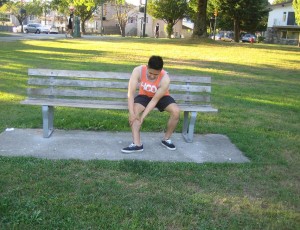A tibia stress fracture can develop due to various factors. The tibia is the bigger of the 2 shin bones as well as a weight bearing bone. It is prone to stress fractures especially in the lower third region.
What are the causes?
The usual causes of a tibia stress fracture include overload on the bone by constant muscular contractions specifically in running. The distribution of stress in the bone is disrupted due to continuous running in which the muscles are fatigued. The muscles could no longer take some of the stress so they depend more on the bone.
Abrupt changes in the running surface such as grass to road increases the risk for a tibia stress fracture. Enduring minor yet several impacts on the bone can lead to a cumulative effect.

What are the indications?
The indications of a tibia stress fracture include the following:
- Pain on the lower third of the tibia that arises after running long distances
- Tenderness and possible swelling of the site
- Pain when the shin is pressed
An X-ray of the injured leg will not show any damage. Another X-ray should be taken after 4 weeks and often reveals new bone where it has started to heal.
Management
The individual should take a break from activity for up to 8 weeks. It is vital to avoid bearing any weight especially running. The fitness level can be maintained by cycling or swimming if pain is not triggered.
Exercises to maintain flexibility and strength in the lower leg are recommended only if pain is not triggered. In addition, wobble balance board training is also suitable. The training methods of the individual should be checked if it is a contributing factor to the injury.
An X-ray of the affected leg is taken and the doctor will advise on when it is safe to continue with training. Initially, the injury could not be seen on an X-ray, but in some individuals, it can be seen after 2 or 3 weeks.
Take note that gait analysis can be used to pinpoint any biomechanical issues of the foot that contributed to the injury. If issues are detected, orthotic inserts are placed in the shoes to fix foot movement.
